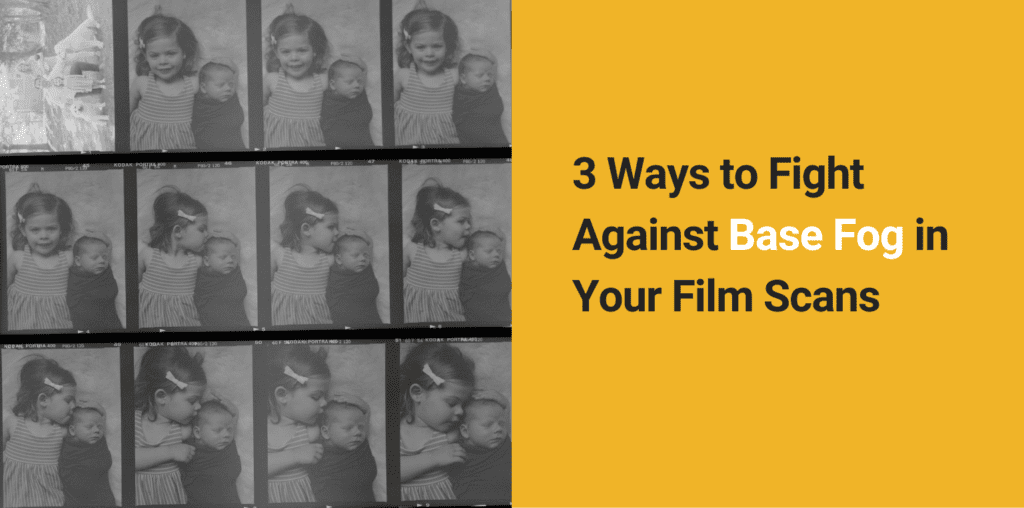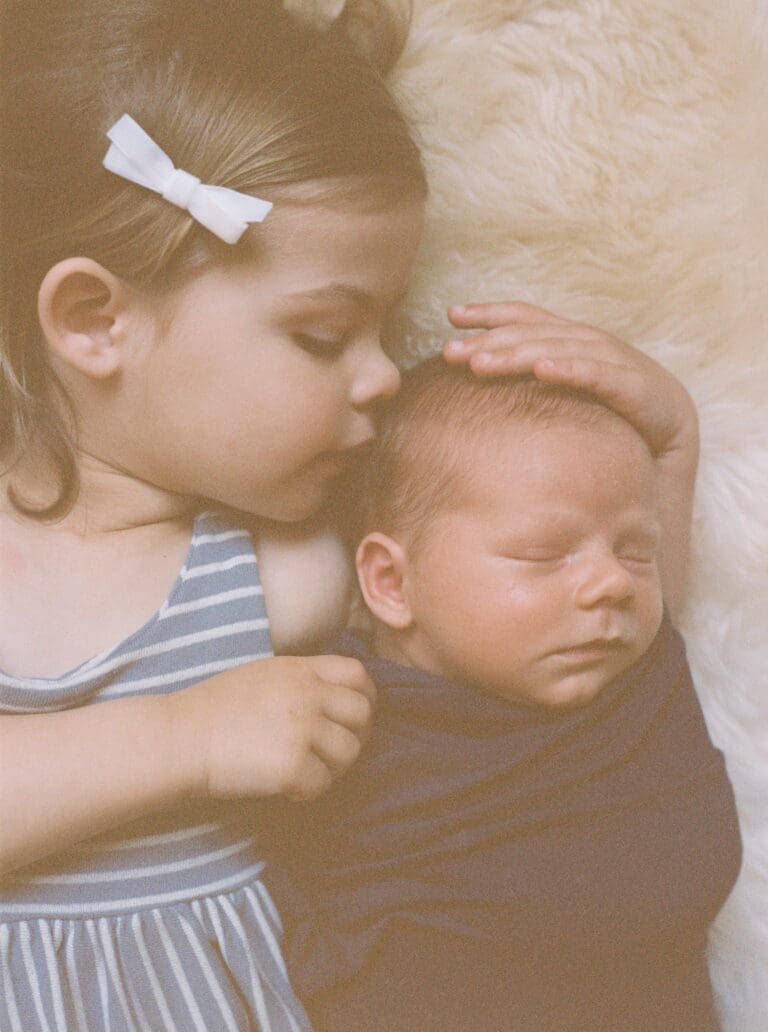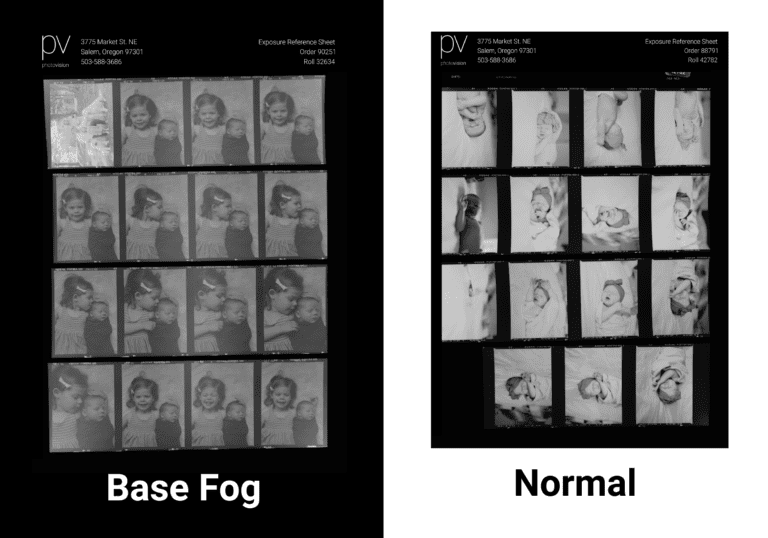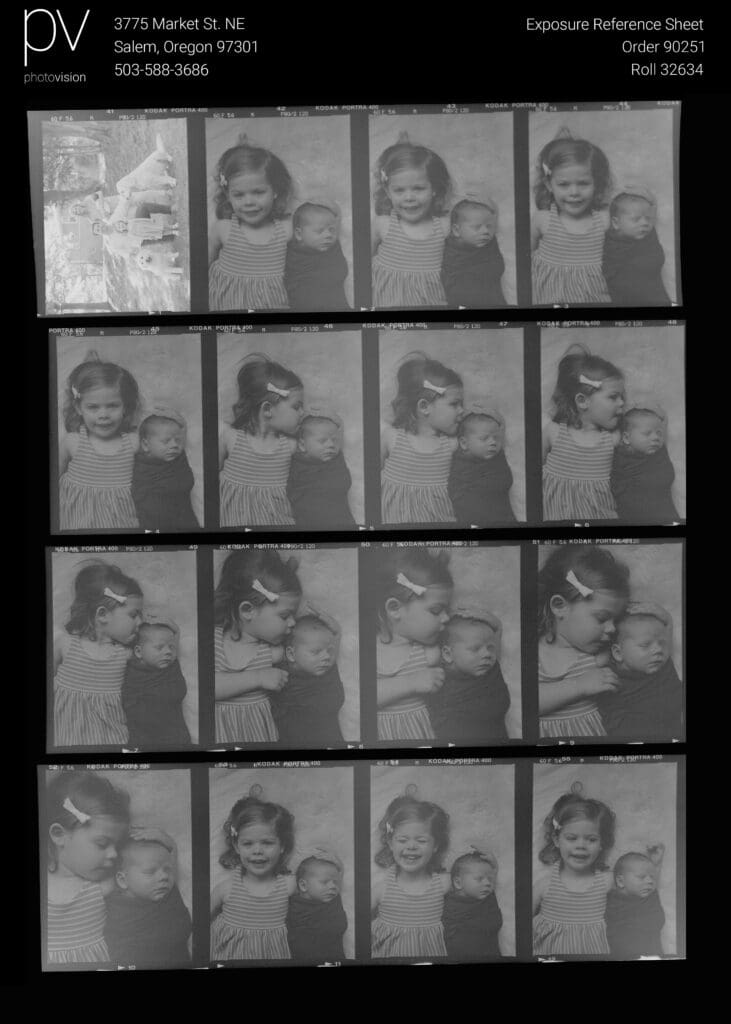
Table of Contents
What even is that?
OK, don’t freak out—all film has base fog. What?! Yep, it is called “film base plus fog” or “FB+F.”
“Base” is the density of an unexposed, processed area of film. It is a section of the film that has been developed, yet never exposed to light—the space in between each frame, for example. And “fog” is the silver halide within the film that has received no exposure to light yet gains a slight amount of density during development.
Although always present, is a problem when it increases to the point where it produces a noticeable reduction in contrast.
Side Effects in Film
- Decreased contrast
- Increased grain structure
- A shift in color palette, often leading to “muddy” tones.
Example of a Base-fogged Scan

Base Fog in an Exposure Reference Sheet

Thanks to our handy-dandy Exposure Reference Sheets, increased base fog is easy to spot. Notice how this Exposure Reference Sheet lacks tonal range throughout and has increased gray tones in between each frame? This is a red flag for base fog.
Now, see how this Exposure Reference Sheet has a wide tonal range with a deep black point in between each frame? This is what you want to see!
Base Fog can increase due to a number of factors:
- Expired Film: The longer film sits, the more dense its inherent base fog (“FB+F”) becomes, making expired film very tricky to shoot when aiming for consistent results.
- Heat: When film is stored in outrageously high temperatures for an extended period of time, the density of the base fog increases.
- X-ray: X-ray damage is cumulative. So, although many airports say film that is 800 ISO and under can safely travel through an X-ray scanner at security checkpoints, those trips through a scanner quickly add up. Meaning your 400 ISO film can travel through the carry-on X-ray machines but be weary to send it through multiple times!
So, how can you avoid base fog?
- Be careful not to buy expired or improperly stored film. Purchase your film from a reliable source, like us!
- Store your film in a regulated environment, like a refrigerator. Cool, dry environments help decrease the rate of base fog.
- Travel with your film in your carry-on bag and always request it be hand-checked. This goes for both exposed and unexposed film. NEVER store film in checked luggage.
How can you correct base fog in post?
What do you do once you have received your scans from base-fogged negatives? You captured some seriously sweet moments and would hate to see those images live the rest of their lives in your computer’s trash bin. Depending on the severity of the issue, you have various editing options:
If the Base Fog is mild, consider adjusting the images’:
- Color balance
- Saturation
- Contrast
- Split-Toning
- “Noise” reduction (which, in reality, is grain reduction—because #film).
If the Base Fog is more severe, consider these editing tips from @amandaoliviaphoto :
“This shot was something special, I knew I had to find a way to deliver it to my client. To edit, I converted the image to black and white and increased the clarity and contrast and used dehaze in Lightroom. Obviously, the image is incredibly grainy, but I really loved it and wanted to deliver it. I felt that at least this way it looked more like a pushed black and white Delta3200 image!” — Amanda Olivia

Edited Scan
